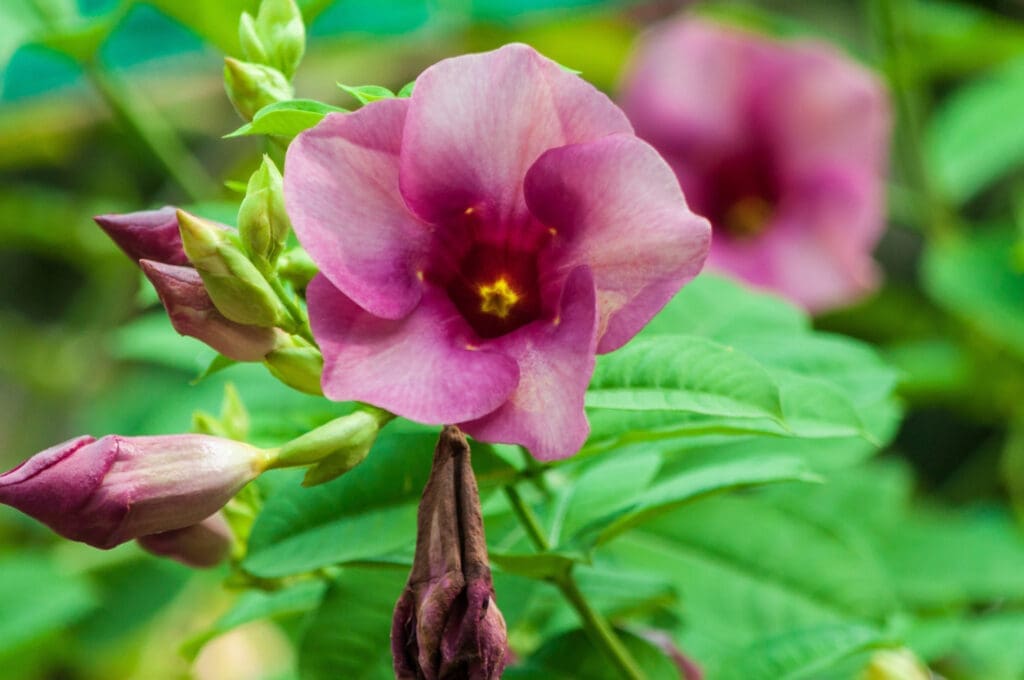
Datura stramonium
Latin name: Datura stramonium
Short name: Stram
Common name: Jimson Weed | Thorn Apple | Devil’s Snare | Mad Apple | Stinkweed
Primary miasm: Acute Secondary miasm(s): Tubercular
Kingdom: Plants
Family: solanaceae
- Symptomatology
- Remedy Information
- Differentiation & Application
A poisonous nightshade plant containing potent tropane alkaloids such as atropine, hyoscyamine, and scopolamine. Native to temperate and subtropical regions. Known for its anticholinergic, hallucinogenic, and deliriant effects.
Historically used for asthma (as smoked dried leaves), as a sedative or narcotic in traditional medicine, and as a source of alkaloids in modern pharmacology. Toxic in overdose.
Proved by Hahnemann and later extensively confirmed by Allen, Hering, and Kent. Most symptoms stem from toxicological reports and provings.
- Central nervous system – especially cerebral cortex, speech centres, motor and sensory functions
- Mind and emotions – fear, violence, terror, hallucinations
- Eyes and pupils – extreme dilation, light sensitivity
- Throat and larynx – dryness, spasm
- Bladder and rectum – spasmodic retention or incontinence
- Skin – burning, dryness, feverish heat
- Right side – symptoms often right-sided or radiating rightwards
- Company
- Bright light (opposite of Belladonna)
- Warmth of bed
- Covering up
- Being held or reassured
- Darkness
- Being alone
- Sleep
- Shiny objects, mirrors, water
- Sudden stimuli (light, noise, touch)
- Fright, grief, shock
- Puberty, suppressed eruptions
- Belladonna – Similar delirium and congestion, but worse in light; more inflammatory than psychotic
- Hyoscyamus – More lasciviousness and jealousy; less fear and violence
- Veratrum album – Mania with religious delusions, but more diarrhoea and collapse
- Opium – Coma, sluggishness, and suppression rather than excitation
- Aconite – Acute fear and restlessness, but more aware and without hallucinations
- Complementary: Belladonna, Aconite, Cuprum
- Antidotes: Camphora, Nux vomica
- Follows well: Aconite (after fright), Belladonna (if delirium worsens)
- Precedes well: Hyoscyamus in chronic mania
- Inimical: Stramonium and Phosphorus may not follow well in hypersensitive states
Stramonium embodies the pure terror of the subconscious, the soul thrust into chaos after shock, fright, or spiritual rupture. The child screaming in darkness, the lunatic who sees demons in mirrors, the fevered patient clawing at invisible foes—all wear the mask of Stramonium. It is a remedy of acute fragmentation, where light becomes horror, sleep becomes death, and the psyche runs from itself. It restores the fractured self by guiding the patient back through the corridor of darkness into coherence. Especially suited to post-trauma states, night terrors, mania, and suppressed eruptions.
- Top remedy for night terrors in children, especially with screaming and clinging
- Indicated in post-scarlet fever neurological complications
- Helpful in post-traumatic psychosis, especially if triggered by fright
- Excellent for chorea, epilepsy, or convulsions after vaccination or suppressed rash
- A remedy of choice in acute mania, with violence, fear, and hallucinations
- Top remedy for night terrors in children, especially with screaming and clinging
- Indicated in post-scarlet fever neurological complications
- Helpful in post-traumatic psychosis, especially if triggered by fright
- Excellent for chorea, epilepsy, or convulsions after vaccination or suppressed rash
- A remedy of choice in acute mania, with violence, fear, and hallucinations
- Samuel Hahnemann – Materia Medica Pura: Original proving and guiding mental symptoms
- C. Hering – Guiding Symptoms: Comprehensive mental and neurological indications, hallucinations
- J.T. Kent – Lectures on Homoeopathic Materia Medica: Thematic focus on fear, violence, and mania
- William Boericke – Pocket Manual: Clinical applications for mania, fever, epilepsy
- John Henry Clarke – Dictionary of Practical Materia Medica: Delirium, convulsions, and febrile states in children
- T.F. Allen – Encyclopedia of Pure Materia Medica: Proving symptoms including hallucinations, chorea, and fright
